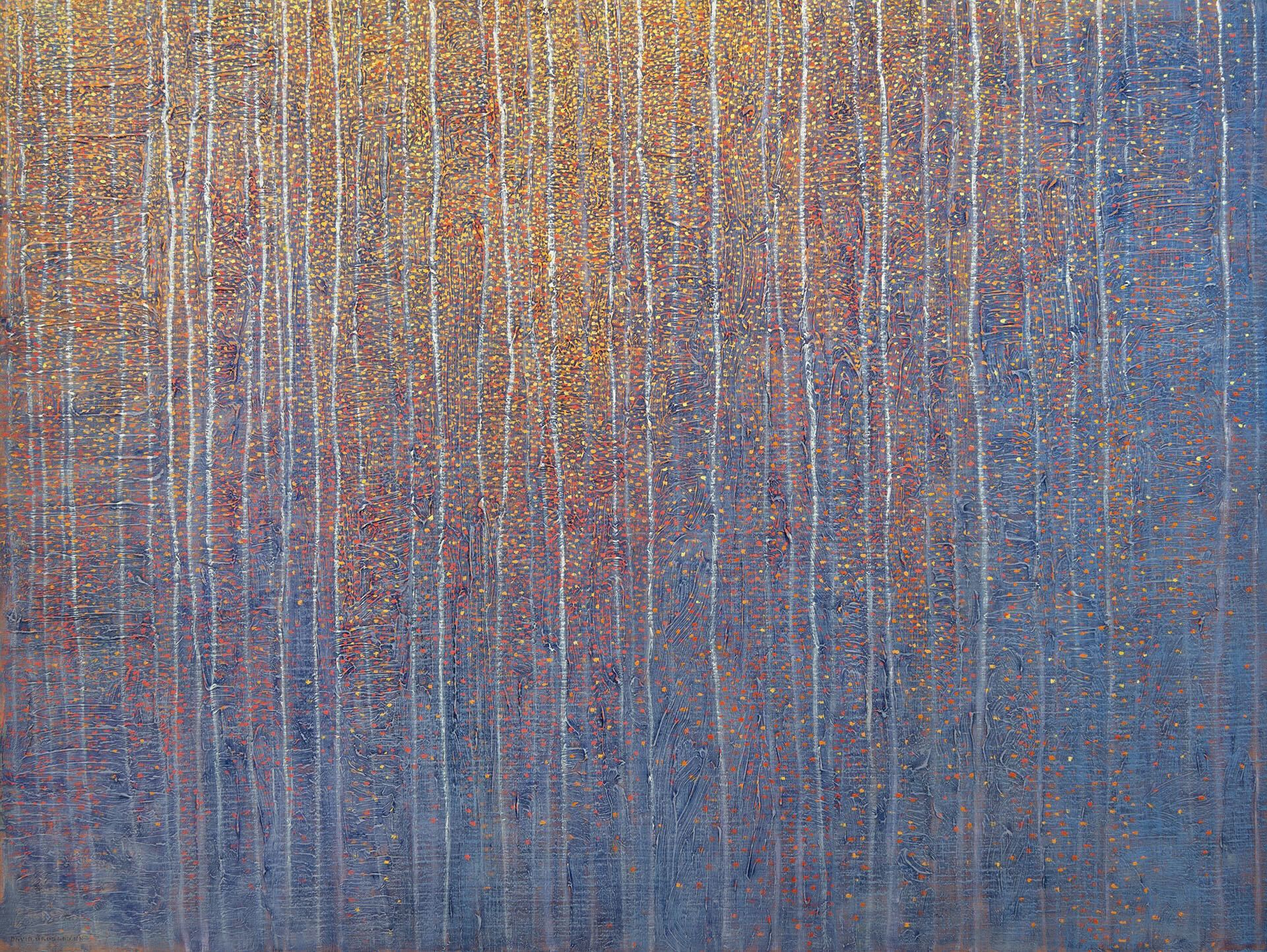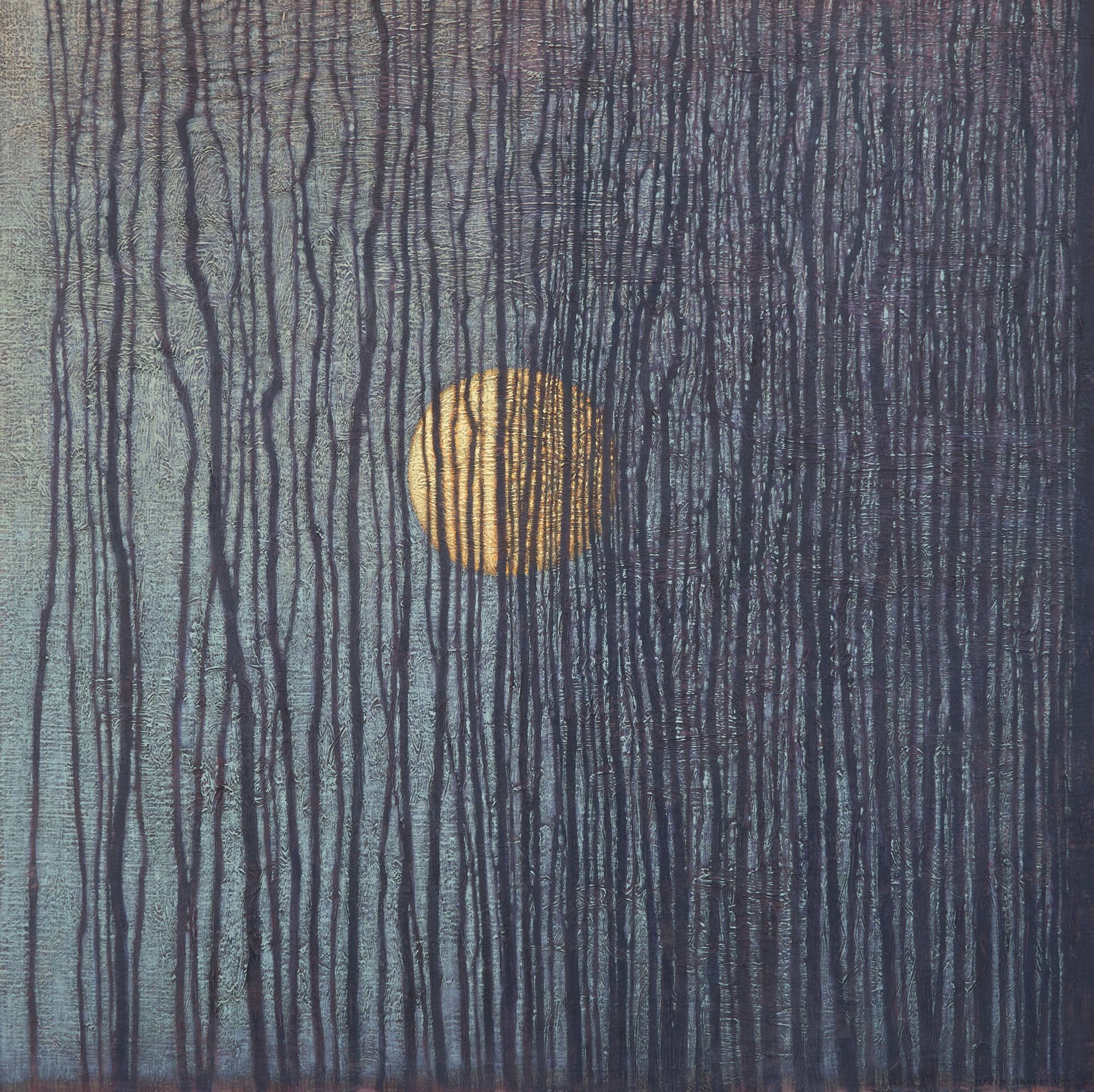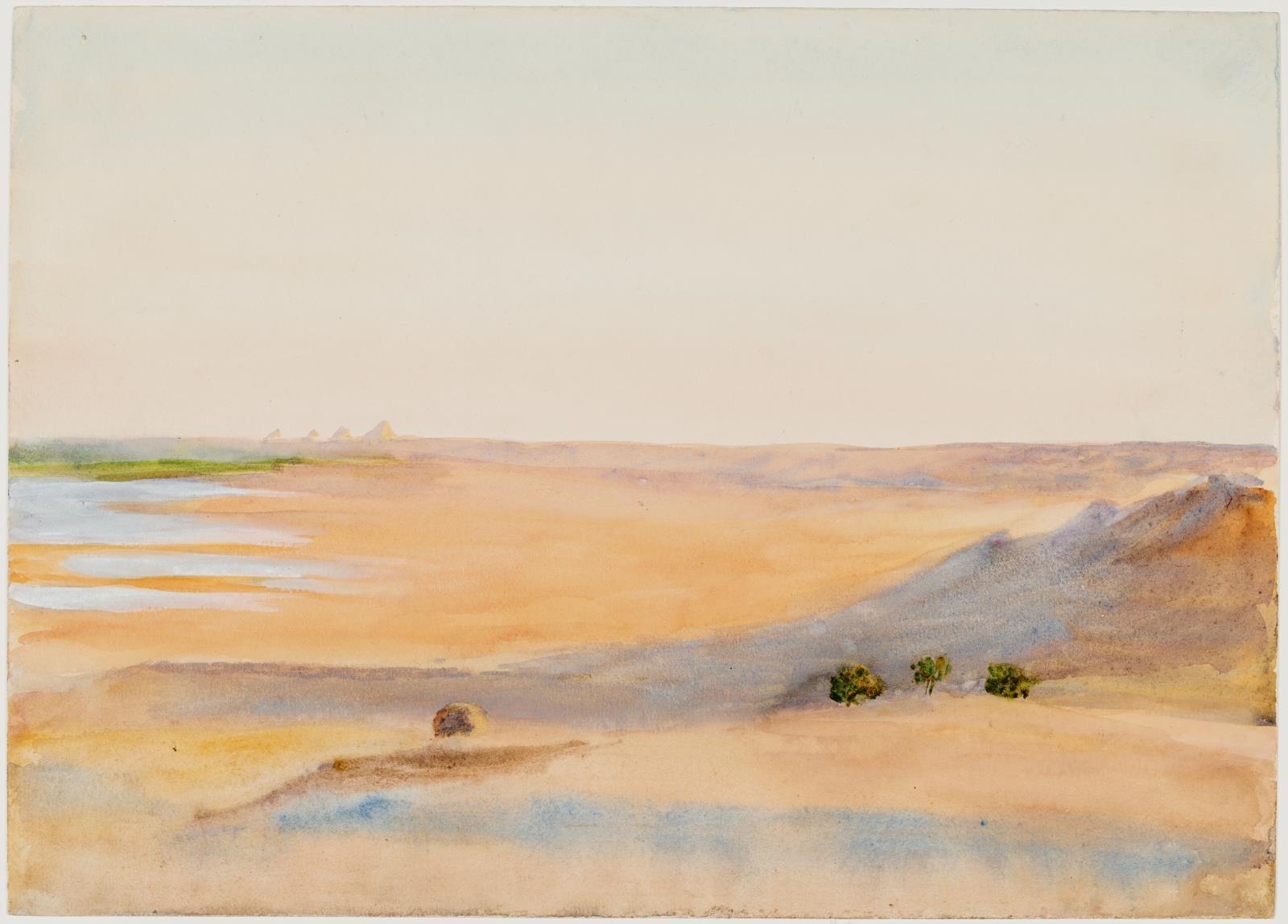“We are called into Culture Care, this act of mending the fractured soil of culture, so that beauty and mercy might grow again. And this mending, this gentle insistence on tending rather than consuming, is itself a form of transfiguration. Where there was only shadow, we can plant seeds of light in hope. To speak of Hiroshima and Nagasaki today is not to rehearse guilt or assign blame; it is to name the wound so that it might become a womb.”
- Makoto Fujimura
Heading image: Emily Sargent (1857−1936), Cairo, watercolor, 10 x 14 in. Museum of Fine Arts Boston. Public Domain.
A Note from IAMCultureCare
I recently heard a fantastic interview with Tim Buch, a former CIA executive, on the difference between being an advocate and being a professional — between influence and information — and what is lost when the clear distinction between those identities is muddied in a polarized culture.
The point Buch and the podcast hosts made was that both advocacy and professionalism — that is, calling for a more just, more beautiful reality than the present one, and presenting the current reality as it is in the most truthful way — are equally important, but both need to be understood and lived into in particular ways. They pointed to the broad loss of trust in the media in recent years (across the political spectrum, and especially among young people) as a result of journalists abdicating a professional role (investigating and telling the facts, no matter how unsightly) for an advocacy one. Like journalists, intelligence agents too ought to be professional, briefing those in power with the full picture rather than mediating what they think heads of state want to hear. On the other hand, policy makers ought be advocates; lawyers ought want a better situation for their clients. Yet to move beyond the broken world as it is into the world as it could be requires both professional and advocate to work well individually — and for the podcasters, to individually leave well alone.
I wonder if artists might offer another, complementary perspective.
Art exists in a weird middle ground, truth-telling while gesturing towards the yet-to-be. Art must, of course, be grounded in reality. To denote artistic quality, we speak of ‘true art’ and a ‘true artist’; an exceptional landscape or portrait is ‘true-to-life’; and the greatest works of art are ‘revelatory’ — that is, revealing something true. But art has an uncanny ability to not just mirror the world we sense in front of us but also to be a portal into something new.
Part of that is a result of an inherent tension in beauty: the simultaneous consolation and desolation that exists when we encounter something transcendent. There is both ecstatic joy and heartache for more, such that once the encounter passes, the ‘real life’ we return to is somehow colder, less real, less alive. The best art and artists bridge that gap, meeting us where we are yet motivating us to change our life, to make that ecstatic vision a reality. Artistry is therefore both professionalism and advocacy, presenting not just the unvarnished facts but also the worlds of possibility beyond them.
Yet if the blurring of lines between the two can lead to distrust and increased polarization, what is the responsibility of artists, of culture-carers in a culture at war with itself? Is it to stop creating? After all, Plato banned poets from his idealized Republic for exactly this dangerous confusion between professional and advocate. Does art’s insistence on both present and future realities inflame tensions, creating warring possibilities of subjective truth?
Or, I wonder, does that insistence provide an antidote? I think the answer lies in beauty. As artists seek to make in ways that embody both professionalism and advocacy, to be border-stalkers in liminal spaces, beauty beckons toward a greater reality beyond the limited world we can sense — a greater reality that is not any less true simply because it is-yet-to-be created.
Mako reflects this month on the 80th anniversary of the nuclear bombings of Hiroshima and Nagasaki. I think this line from his piece captures this feeling better than I can: “To speak of Hiroshima and Nagasaki today is not to rehearse guilt or assign blame; it is to name the wound so that it might become a womb.”
As we make, as we care for culture, may the wounds of our fallen realities become wombs of possibility, portals into New Creation.
Jacob Beaird, Editor
A Note from Mako Fujimura, Founder of IAMCultureCare
A Bell for Transfiguration: Hiroshima, Nagasaki, and Endō
The train raced along the coastline from Fukuoka toward Nagasaki. It was raining, and white waves frothed the sea. I spotted a few summer bungalows and a procession of windbreaks set up with pine groves
- Shūsaku Endō, excerpt from “A Six-Day Trip” in Portraits of a Mother, translated by Van C. Gessel, Yale University Press, 2025
* * *
Eighty years have passed since the sky over Hiroshima and Nagasaki opened with atomic fire, a rupture in the fabric of time that sent both suffering and tears drifting across generations.
While doing research to write my book Silence and Beauty on Shūsaku Endō (and as an advisor to the Martin Scorsese film), I remember following Endō’s steps in Nagasaki and experiencing the indelible landscapes of southern Japan very much as the scenes above describe.
Nagasaki was Endō’s treasured town. The bells still toll in remembrance, gathering the fragments, archiving the melted beads of stained glass windows from Oura church (named after the twenty six martyrs of the seventeenth-century) near the detonation site for future generations. There is a peculiar, humble grace in this; art is the discipline of remembering.
In the Christian liturgical calendar, August 6 is also the Feast of the Transfiguration. We remember the mountain of light, the face of Christ radiant in glory. In the hills of Sotome, Nagasaki, stands the Endō Literature Museum overlooking the coastal lines where Portuguese priests landed secretly at night, to enter a Japan that was then decidedly closed to the outside world. Now, from this vista, one can look outward toward Korea, Macau, China and the rest of the world, imagining how Endō’s words began to journey outward.
Recently, the curators at Endō museum made a startling discovery: an unpublished novella was found among a stack of papers yet to be organized. Yale University Press published the novella this year along with a few short stories previously not known in English in an excellent translation by Van C. Gessel. The quote above is from one of the short stories.
In Matthew’s Gospel, the transfigured Jesus stands between Moses and Elijah — law and prophecy transfigured into love. This mountaintop light was not of annihilation. It was a revelation. The glory of Christ, translucent through the veil of human form, is not destruction but an intensification of being. At Sotome, I considered the transfiguration of Shūsaku Endō from a poor French literature student to one of the greatest writers of his generation.
We see in the new collection of Endō the work of such transfigured, generational impact. The “Portrait of a Mother” captures hidden stories of his mother and his wife previously kept under the veil; and, quite significantly, they include Endō’s reflections — via his characters — on his estranged father.
Where once we marked generations by what was passed down — land, language, birthright — we now find ourselves inheritors of trauma, silence, irradiated futures, and indelible stories like Silence. Children are born into echoes they did not make and silences they walk into. But they are also born of our stories, if we will write and continue to sing them.
We are called into Culture Care, this act of mending the fractured soil of culture, so that beauty and mercy might grow again. And this mending, this gentle insistence on tending rather than consuming, is itself a form of transfiguration. Where there was only shadow, we can plant seeds of light in hope.
To speak of Hiroshima and Nagasaki today is not to rehearse guilt or assign blame; it is to name the wound so that it might become a womb. The work of remembering is generative, if done with mercy, if done with care. The Japanese word hibakusha means “bomb-affected people” — but even they, through decades of advocacy, poetry, and planting trees, have turned victimhood into vision. They have blessed future generations.
To bless is not to forget suffering. To bless is to offer it back to God, open-handed, asking that the trauma not harden into cynicism but be softened into wisdom. The bells of Nagasaki still toll, reminding us of such an offering.
I painted Silver Rain re-membering and lamenting, praying and hoping. Silver will tarnish over time, marking our humanity, but then the darkness will be light.

Silent Rain (for 80th), Minerals, mica, silver, and gesso on canvas, 82 x 66 in. Copyright © 2025 Makoto Fujimura.
This is the mystery of transfiguration — not the erasure of scars, but the illumination of them. Christ did not shed his wounds after his resurrection. He showed them to us.
Glorious. Holy. Wounds.
Mako Fujimura
Art Feature: Continuations, Jackson, 2025

Lines (Autumn), Oil on linen panel, 30 x 40 in. Copyright © 2025 David Grossman.

Carry Me Toward Morning, Oil on linen panel, 36 x 36 in. Copyright © David Grossman.
By David Grossman
Once I watched the sunrise from the summit of Mount Sinai. Long before dawn, I started climbing. My route began at St. Catherine’s Monastery where I was staying, and from there the trail steadily and steeply ascended through stony ravines and over steps carved centuries ago by pilgrims. By the time I reached the final incline to the peak, the sky had changed from black to silver and then to warm green along the horizon below. I scaled the last bit of trail with plenty of time to spare, so I sat on the cold rocks and waited. Other pilgrims steadily filled the spaces around me, packing more and more tightly onto the small summit. I was grateful for the warmth of other onlookers as I sat quietly in the cold, together watching the ever changing colors of the sky. When the sun rose at last, it came with a wave of warmth and a surge of orange light.
That morning on Mount Sinai was years ago during a time of life when I was waiting, needing to choose a path, hoping for guidance. And looking back now I can see that guidance came, though in less dramatic and more unexpected ways than the immediacy of that sunrise. Though much of my life looks different now, at heart I am still mostly that same person waiting, expectant, feeling a little lost and looking for transcendence.
When I am making my paintings, many of them go through so many alterations that the surface of the finished piece is unrecognizable from where it began. Each painting takes on its own voice, and the process of letting that voice flourish, however different from my initial vision, can be difficult. It involves more waiting than I would like. Usually I have to set my pieces aside for a few weeks or a few months to let my ideas adjust. Then, when the painting and I seem ready to keep going, I take it back out and start scraping off, painting over, sanding, re-shaping, often with frustration, sometimes with joy at the unexpected, always trying to accept the altered textures that follow. And if you look closely at the surface of my work you can see these rambling textures, the shaping and alterations that took place along the way toward completion. Gradually I am allowing myself to embrace this process of waiting and responding to it with something less like despair and more like hope.
My deepest hopes are ones that involve a lot of waiting. They come at the unglamorous pace of washing another load of diapers, of crawling on the ground with my daughter, of watching ripples on the lake with my son, of stepping back into my studio on days when that step feels challenging, facing that next layer of paint without really knowing where it will lead. The daily layering of one moment over the next reminds me of my limits, and of the deeper hopes for my children and for our world. What alters and what remains along the way takes shape unhurriedly, in the cadence of each ordinary though transcendent moment after another.
David Grossmann explores the space between nature and the inner landscape of perception and contemplation, intuition and memory. His paintings take shape in a slow progression that allows each to become a meditative, reverent space. His work can be seen at his website and at his upcoming solo show “Continuations”, Sept 5 – 20 in Jackson Hole, WY. An Artist Reception is on September 10.
Culture Care Events & Announcements
- “Into the Silence: Winter into Spring” Exhibition—Boston, MA, August 27-October 15. Mako Fujimura and Bruce Herman to exhibit original works from the QU4RTETS project alongside newer works by Fujimura in a special exhibit in Gordon College’s Barrington Center for the Arts. Additional details and events TBA.
- Makoto Fujimura: Art Is: A Journey Into the Light is published October 21. Mako’s next book with Yale University Press will be available this fall wherever books are sold (pre-order now from any of the retailers linked here!). Art Is takes readers along on Mako’s meandering journey as an artist. We witness him making his“process-driven slow art” — using pulverized minerals, gold, or pigments made from oyster shell — as he considers the plants and wildlife on the land where he lives, including further reflections on tree swallows! Bringing together the author’s written reflections with over 70 of his paintings, drawings, and photographs in full color, Art Is invites us to see the world in prismatic and diverse lights, helping us navigate the fractured, divisive times we live in.
Do you have a news item or upcoming culture care event? Consider sharing it with us for a possible feature here in the newsletter! Email jacob@internationalartsmovement.org.
Web Links
- July Belonging Conversation from Julia Hendrickson and Mako Fujimura.
- In a rare good-news AI update, Google’s DeepMind just released a cool open-source tool to aid archaeologists and researchers in contextualizing ancient writings.
- Aerial photographer George Steinmetz’s Feed the Plant project captures global food production.
- The New Yorker profiles the ‘Pope’s Astronomer’ — a midwestern Jesuit whose primary role as director of the Vatican Observatory is simply to “do good science.”
- I refuse to download the Substack app as a matter of principle, but even the preview of this reflection from Paul Kingsnorth on living slowly is worth a read.
- The Hedgehog Review on AI and the language that makes us human.
- Related, THR again on what makes a good translation.
- Fascinating ceramics by Koichiro Isezaki.
IAMCultureCare is a registered 501c(3) non-profit organization that relies on your support to continue our Culture Care efforts of amending the soil of culture as an antidote to toxic culture wars. This newsletter and our other programming do that effectively, and we welcome gifts of any size to continue these efforts. You can donate online or get in touch with us about corporate sponsorship and other giving methods!
All content in this newsletter belongs to the respective creators, as noted, and is used with permission. If you would like to submit something for consideration in a future newsletter issue, you may do so by filling out this form or by emailing jacob@internationalartsmovement.org.
